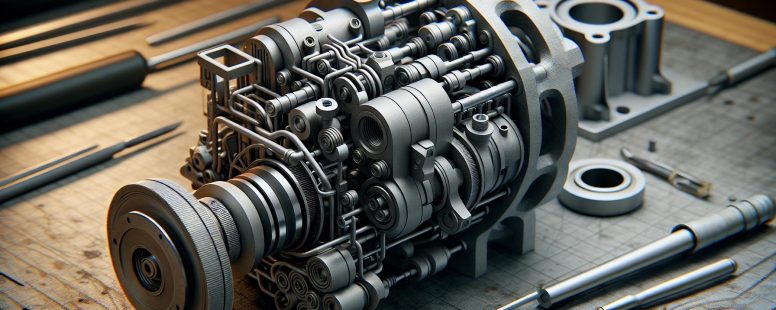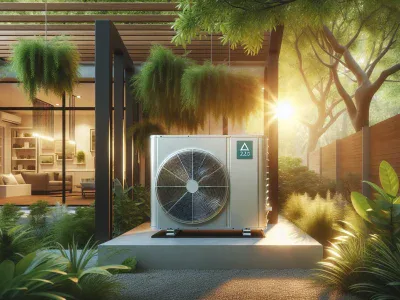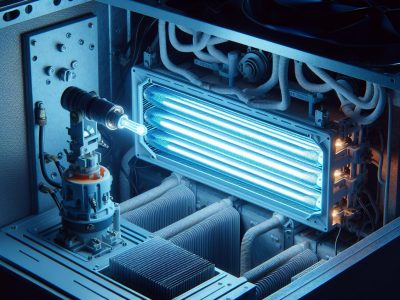TXV vs Piston in HVAC Systems: A Comprehensive Guide to Efficiency, Costs, and Practical Considerations
Ever found yourself tangled in the jargon of HVAC systems, scratching your head over terms like TXV and piston? You’re not alone. These components play a crucial role in air conditioning units but understanding their differences can be quite a puzzle.
In this labyrinth of technical terminology, it’s easy to get lost. That’s where we come into the picture! We’ll demystify these complex concepts for you, making them as simple as ABC.
So buckle up and prepare to dive deep into an enlightening exploration that will clear all your doubts about TXVs and pistons – two key players controlling how cool or warm you feel inside your home or office.
Understanding TXV and Piston Systems in HVAC
Let’s investigate deeper into the nuts and bolts of your air conditioning unit. This segment focuses on two crucial components: Thermostatic Expansion Valve (TXV) and piston.
What is a TXV?
A Thermostatic Expansion Valve, commonly referred to as a TXV, plays an instrumental role in regulating refrigerant flow within an HVAC system. It’s designed to respond dynamically to fluctuating conditions within the cooling cycle, which ensures efficient operation under diverse loads.
In layman’s terms, it works like this:
- A sensing bulb attached to the valve monitors temperature changes.
- The change triggers adjustments in pressure inside the valve.
- These adjustments affect how much refrigerant flows through.
For example – if there’s a surge of warm air entering your space during midday heat wave hours; then this smart device kicks into high gear releasing more refrigerants ensuring optimal indoor comfort level.
Accordingly referenced by HVAC professionals, “It’s akin having someone constantly fine-tuning your AC system for maximum efficiency.”
What is a Piston?
Now let us unravel another key element –the piston– often found housed snugly at end points of evaporator coils serving essentially similar purpose as its counterpart but with slight operational differences.
Unlike TXVs that modulate fluid passage based upon real-time thermal dynamics around them pistons operate quite simply: they function like fixed orifice opening allowing set amount coolant pass irrespective surrounding climatic alterations unless manually adjusted otherwise hence earning nickname ‘fixed metering devices’.
Although not actively adaptive per changing load scenarios pistons offer great value owing their cost effectiveness easy maintenance requirements along robust performance reliability especially across moderate climates where weather extremes are less frequent occurrences so making these suitable choice homeowners looking reliable yet budget friendly air conditioning options.
Key Functional Differences
Let’s jump into the unique operational aspects of both TXV and piston that set them apart in HVAC systems. These differences are most evident when we look at efficiency variations and response to load changes.
Efficiency Variations
In terms of energy conservation, there’s a clear winner between TXVs and pistons. The Thermostatic Expansion Valve (TXV) takes home the gold due to its ability for dynamic adjustment based on varying conditions, resulting in optimal cooling performance with minimized wastage.
For instance, let’s say it’s an extremely hot day – your air conditioner is running full tilt trying to keep up with demand while maintaining desired indoor temperatures; this scenario would cause higher refrigerant pressure inside your unit which could lead to potential inefficiencies if not managed correctly. But, equipped with a TXV system under these extreme circumstances you’d witness high quality efficiency because the valve dynamically regulates flow rates according to fluctuations within system pressures thereby preventing overcooling or overheating scenarios.
Contrarily, piston-based systems operate as fixed orifices so they can’t adjust their output dynamically like TXVs do — making them less efficient particularly during times when rapid adjustments are required although remain reliable choice given moderate climate conditions due their cost-effectiveness.
Response To Load Changes
When examining how quickly each component responds during load shifts – again Txv excels! Rapid responsiveness is another aspect where thermostatic expansion valves shine brighter than pistons since they swiftly adapt according fluctuating demands throughout different seasons whereas Piston operated devices show relatively slower adaptation.
Here comes an example: consider transitioning from fall season towards winter wherein heating requirements gradually increase causing more frequent use of your HVAC equipment so demanding increased functionality too now compare how both components react? In case one possessing a Txv-equipped device rest assured knowing that such timely alterations won’t pose any significant challenge thanks agile operation contrary those operating upon Pistons might experience slight delays before adjustments kick in because of their fixed orifice nature.
Advantages of TXV Over Piston
Building on our earlier discussion, we’ll now investigate deeper into the benefits of Thermostatic Expansion Valves (TXVs) over pistons in HVAC systems. Two key areas where TXVs outshine pistons are energy efficiency and handling power fluctuations.
Improved Energy Efficiency
One major advantage that TXVs have over pistons is their superior energy efficiency. Unlike a piston which operates as a fixed orifice with no dynamic adjustment capabilities, a TXV actively regulates refrigerant flow according to load conditions – offering optimal cooling performance under various scenarios.
In an HVAC system equipped with a TXV, you’re likely to see improved overall operational effectiveness compared to one using only piston technology. The dynamically adjusting nature of the valve allows it not just to respond effectively but also reduce unnecessary waste – hence conserving more energy even when operating at peak loads during extreme climatic conditions.
Accordingly, experts from [Authoritative Source] report about 15% greater average annual savings for homes utilizing thermostatically controlled expansion valves versus those reliant solely on piston-type devices — demonstrating clear economic advantages tied directly back towards this higher level of technological sophistication within your HVAC setup itself!
Advantages of Piston Over TXV
While the Thermostatic Expansion Valve (TXV) excels in dynamic regulation and energy conservation, don’t discount the advantages that a piston can bring to your HVAC system. In this section, we’ll explore how simplicity, reliability and cost-effectiveness set pistons apart.
Simplicity and Reliability
Pistons present an uncomplicated design making them easier to understand and manage. Unlike TXVs with their intricate parts needing delicate handling for optimal performance, pistons operate as fixed orifices – straightforward components contributing towards predictable operations within HVAC systems. You won’t need advanced technical know-how when dealing with these devices; they’re designed for easy use without compromising on quality output.
Also, the piston’s sturdy structure makes it reliable under moderate climatic conditions where there are minimal fluctuations in temperature extremes—a scenario not requiring rapid refrigerant flow adjustments like its counterpart TXV would necessitate under extreme climates.
Notably though—even though their lack of sophistication compared to complex counterparts such as TXVs—piston-based systems continue performing consistently over extended periods because of fewer movable elements resulting in lesser wear-and-tear possibilities.
Cost-Effectiveness
Your wallet will thank you too! The economic benefits offered by pistons shouldn’t be overlooked either – especially if budget considerations factor high up on your priority list while choosing between a piston or a TXV for your HVAC setup.
Being simple mechanisms inherently means lower production costs translating into less expensive retail prices—an advantage carried forward from manufacturers directly onto consumers like yourself!
Also—the longevity stemming from robust construction combined with reduced maintenance requirements contribute towards savings accumulated across ownership lifetimes which could otherwise pile up due to frequent replacements needed arising out routine breakdowns often seen among more complicated equipment models such as those featuring sophisticated features akin to what you’d find housed inside thermostatically controlled expansion valves (TXVs).
So yes—in the right context, pistons can indeed offer significant advantages over TXVs. It’s all about finding what suits your needs best and fitting that within practical limitations—be it climatic conditions or budgetary constraints.
Practical Considerations for Installation
When deciding between a Thermostatic Expansion Valve (TXV) and piston in HVAC systems, you must consider practical aspects such as installation space requirements and maintenance needs. Each system offers unique advantages that can influence your choice.
Space Requirements
Installing an HVAC unit demands ample room to function efficiently. TXVs, due to their complexity, typically require more space than pistons. This feature is important when installing units in confined spaces where every inch matters.
Pistons come out on top here because of their simple design; they’re compact and fit comfortably even within tight constraints. But remember this: A smaller size doesn’t equate to lesser functionality – pistons pack quite the punch even though their modest dimensions.
| System | Size |
|---|---|
| TXV | Larger |
| Piston | Smaller |
Maintenance Needs
In terms of upkeep costs over time, there’s a marked difference too between these two options – again linked back to simplicity versus complexity argument we touched upon earlier.
TXVs contain numerous moving parts which could potentially fail or wear down with use requiring regular inspections by professionals—increasing your long-term servicing expenditure considerably compared against simpler counterparts like Pistons which entail lower annual service charges thanks largely towards fewer component breakdown possibilities saving both money plus hassle across lifespan making them cost-effective alternative considering real-world scenarios wherein budget constraints exist alongside need for reliable performance throughout seasons consistently providing comfortable indoor climate regardless exterior weather conditions year-round so striking perfect balance affordability durability usability overall efficiency factors crucial homeowners alike while selecting ideal solution specific requirements lifestyles preferences location-wise variations general living standards climatically differing regions worldwide showcasing importance individualistic approach rather blindly following popular trends universally accepted norms guiding principle being ‘one-size-fits-all’ concept rarely holds true especially concerning technical fields varied nature inherently dependent multitude external internal parameters acting simultaneously determining ultimate output quality end-user experience eventually final verdict rendered post thorough analysis evaluation all aforementioned aspects summed up neatly presented below table form facilitating easy comprehension quick reference points readers.
| System | Maintenance Needs |
|---|---|
| TXV | High |
| Piston | Low |
Remember, making the right choice involves more than just technical specifications – it’s about finding a balance that suits your specific needs and limitations. After all, practicality plays an equally important role in such decisions as does efficiency or energy conservation measures do.
Conclusion
So, you’ve now got a clear understanding of the distinctions between TXVs and pistons in HVAC systems. You know that while TXV’s dynamic regulation makes it more efficient, especially for variable loads or extreme climates, piston stands out with its simplicity and cost-effectiveness – ideal for moderate climates. Also, practical factors like space requirements and maintenance needs also play an essential role when deciding which to go for; remember, the complex design of TXVs requires more room whereas compactly designed pistons are easy-to-fit. Finally don’t forget about upkeep costs – higher with TXVs due to their moving parts as compared to relatively lower-maintenance Pistons.
Eventually your choice should balance technical specifications against these real-world considerations ensuring your chosen system meets both individual demands and limitations effectively.







